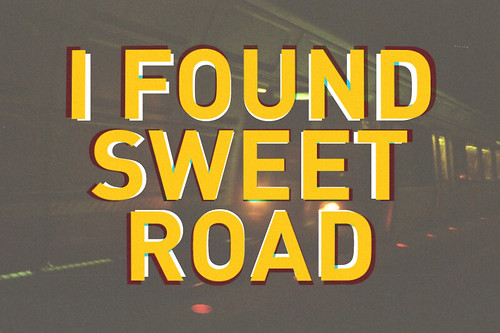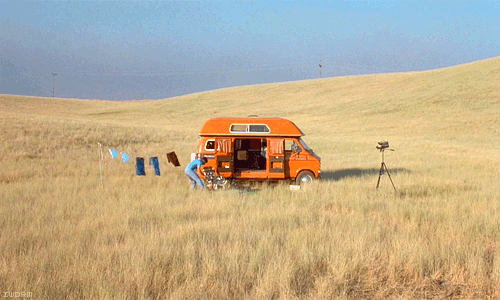
Thursday, 31 March 2011
Wednesday, 30 March 2011
The Internet is like a Penis.
In the long-distant past, its only purpose was to transmit information considered vital to the survival of the species. Some people still think that's the only thing it should be used for, but most folks today use it for fun most of the time.
It has no conscience and no memory. Left to its own devices, it will just do the same damn dumb things it did before.
It provides a way to interact with other people. Some people take this interaction very seriously, others treat it as a lark. Sometimes it's hard to tell what kind of person you're dealing with until it's too late.
If you don't apply the appropriate protective measures, it can spread viruses.
It has no brain of its own. Instead, it uses yours. If you use it too much, you'll find it becomes more and more difficult to think coherently.
We attach an importance to it that is far greater than its actual size and influence warrant.
If you're not careful what you do with it, it can get you in big trouble.
It has its own agenda. Somehow, no matter how good your intentions, it will warp your behaviour. Later you may ask yourself "why on earth did I do that?"
Some folks have it, some don't.
Those who have it would be devastated if it were ever cut off. They think that those who don't have it are somehow inferior. They think it gives them power. They are wrong.
Those who don't have it may agree that it's a nifty toy, but think it's not worth the fuss that those who do have it make about it. Still, many of those who don't have it would like to try it.
Once you've started playing with it, it's hard to stop.
Some people would just play with it all day if they didn't have work to do.
[via]
Monday, 28 March 2011
Saturday, 26 March 2011
Thursday, 24 March 2011
Wednesday, 23 March 2011
Tuesday, 22 March 2011
Police kettling challenged in court
from The Guardian by Vikram Dodd
The court action is a test of the police tactic of kettling, used to detain a mass of people at protests. The case precedes Saturday's march through London to protest against government budget cuts that will again test how effectively Scotland Yard can manage protests. According to court documents seen by the Guardian, police in charge of the protest ordered a climate camp to be kettled and then cleared, but officers were left to decide how much force they should use.
Video shot on the day shows demonstrators trying to avoid being beaten by raising their hands in the air and chanting "This is not a riot" at police clad in helmets and riot gear. Officers on the videos are seen to strike demonstrators, who cannot be seen on the video to be engaged in any violence. Notebooks secured from some officers contain admissions they used violence, but officers said this was to protect themselves or colleagues.
On 1 April 2009, there were several demonstrations in the area, but the court case deals with a climate camp in Bishopsgate. A police chief accepts it was peaceful but decided it should be contained to avoid potentially violent people joining it. Officers were told they were containing or detaining those in the climate camp to prevent a breach of the peace. Protesters would be held for hours.
The case has been brought by three protesters, one of whom says his girlfriend was beaten by police and then denied medical treatment. The protesters bringing the case say police were indiscriminate in detaining and isolating the peaceful climate camp. In documents setting out their case, their lawyers say: "The police took action against the climate camp as if it were a violent crowd … That is how the instruction to impose containment was interpreted by officers on the ground."
Extracts from police notebooks record the force they used. One officer said he saw a man trying to get near officers "so I punched him in the jaw and he moved backwards … I delivered a baton strike to the shoulder of a male trying to push into officers." Another officer said: "To get the protesters who would not move back, I needed to hit the flat part of my shield to get them to move back. I also used open handed palm strikes." Another wrote: "I used my round shield to push back the crowd, which was 15 people deep." The officer claims the crowd resisted and some punched and shoved back "so I retaliated with shield strikes both flat and angled. I also delivered open palm strikes to a number of individuals and fist strikes as well." Police chiefs say officers were expected to use their "discretion".
Lawyers for the protesters claim the actions of the police broke the law: "There was no lawful justification for violent force being used on any of these occasions. Accordingly, its use and any associated instructions … were unlawful," they allege in court documents. The solicitor, John Halford, said: "This case exposes the shameful fact that many police officers lack even a basic understanding of their proper role which is to facilitate non-violent protest, not suppress it using violence. That problem extends from the officers on the ground that used force on a peaceful crowd as a first resort to their senior commanders, who gave no guidance that doing so was unacceptable. "What the courts have held to be an extreme step – particularly because of the risk of fundamental rights being compromised – has now become routine."
























